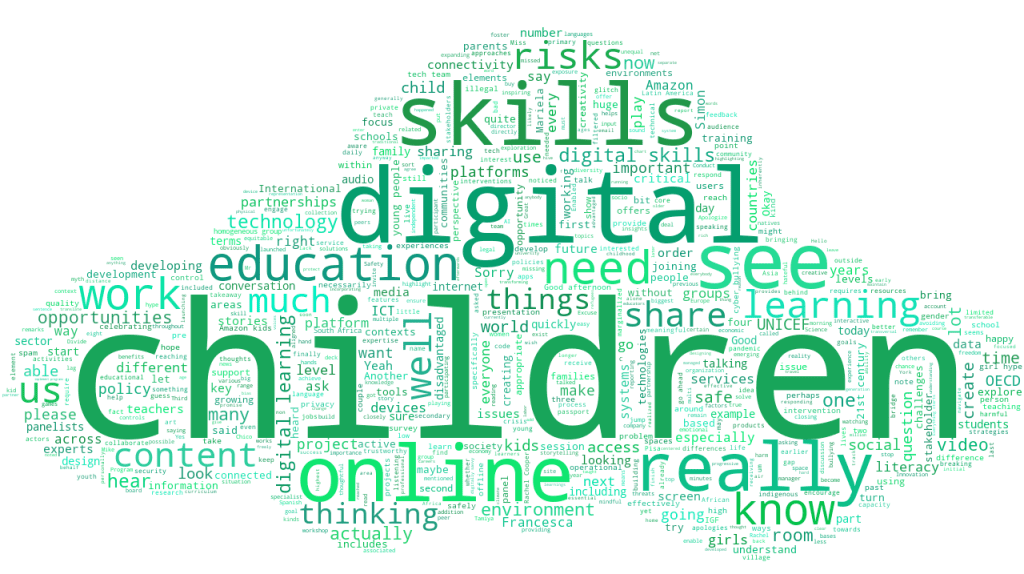Building a safe & trustworthy digital world for all children
2 Dec 2022 10:45h - 11:45h
Event report
The session discussed how to be mindful of children and young people online and how to enable them to have more opportunities, creativity, and entertainment, while making sure they are safe in this environment.
One of the projects presented was Amazon Kids, which provides child-appropriate content experiences through curated and filtered services. There is also a subscription media service, Amazon Kids+, which has entirely hand-picked, prescreened and filtered content, which parents can further curate. Those working on the Amazon Kids platform also rely on experts in this space, working closely with groups like Family Online Safety Institute, The Digital Wellness Lab at Boston Children’s Hospital, and other groups to leverage the existing expertise as they build the platform, and welcome inputs and guidance from the broader community.
Chicos.net organisation has been working for 25 years to improve the well-being of children in Latin America. They witnessed the huge impact of digital technologies on children’s rights. As digitalisation grows, many children remain excluded from opportunities to learn and develop. The biggest difference is for those who have the skill to use the advantage of digital media and those who do not and are left behind.
An organisation based in South Africa called African Girls Code is working on empowering and enabling girls to enter into the ICT, STEM, and maths and science related industries, having taught over a million girls. The organisation aims to ensure that in the future women and girls in Africa are included in these industries, through learning interventions, whether on the ground or at the policy and intergovernmental level, collaboration with corporate and private sector partners, civil society organisations and running a number of skills development programmes for youth, for women and girls on their campus.
DotAsia is supporting a new top-level domain DotKids, which is currently being launched. They work closely with different parties to try to maintain the platform with a protective environment while allowing children to explore more freely.
Feedback from children is key for creating spaces for children – it is necessary to incorporate their voices into developing any kind of programme or platform. It is also necessary to avoid data collection and monetisation of this data.
Recognising the diversity of children from different contexts, cultures, languages, ways of thinking, promoting representation of all kinds of groups, like girls, indigenous, and children from rural areas is important so that they can see themselves represented on the internet and thus break the cycle of exclusion.
Different ways to handle different digital risks, inside and outside of education were proposed, including: providing information through resources and campaigns, thinking of ways to support children outside of school, such as reporting mechanisms for cyber bullying or exposure to illegal content, as well as creating frameworks, policies, and legal avenues.
In the connected society, children are hyper connected and should be given the opportunity to make better and more meaningful use of digital media. For the children who are not connected enough, an equal opportunity to learn and create with technology should be created.
By Anamarija Pavlovic
The session in keywords
Related topics
Related event


